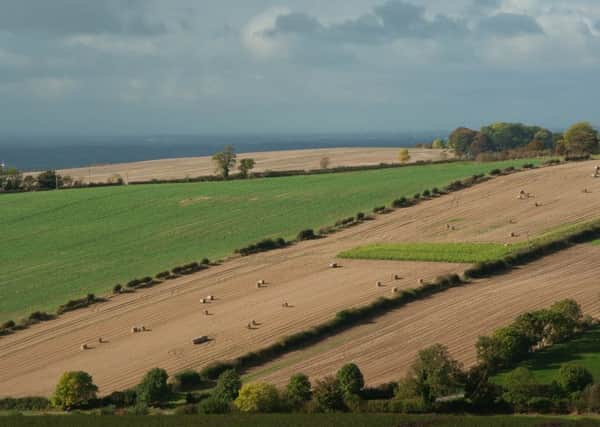Hopes for Yorkshire Wolds return of massive bird species weighing up to 18kg


This remarkable bird became extinct as a British species after the last one was shot at Foxholes near Scarborough in the 1830s, yet people still entertain hopes that it might one day return to its once-favoured landscape of the Yorkshire Wolds.
The great bustard is among the largest flying land birds on the entire planet. It is more than three foot long, has a wingspan of seven feet and can weigh up to 39lb or 18kg.
Advertisement
Hide AdAdvertisement
Hide AdUntil the 18th century it was common not just in the Wolds but across other English chalklands, and when seen on the ground from a distance flocks of them were sometimes mistaken for sheep, which is probably how the bird earned its collective noun “a drove of bustards”.
Two factors were behind its demise. One was hunting, with the great bustard prized for the number of diners it could feed.
You have heard of a three-bird roast, well the bustard was so large that one French chef used it to create the 17-bird roast, beginning with great bustard and ending with a garden warbler.
The other cause of its decline was habitat loss. The Yorkshire Wolds, for example, were a huge grass-covered sheep-walk until the Enclosure Acts from the 17th century onwards saw the landscape divided by hedgerows and ploughed up to feed a British population that grew from six to nine million in the second half of the 18th century.
Advertisement
Hide AdAdvertisement
Hide AdLast week the bird featured in a fascinating thread on Twitter, which included an RSPB-compiled map of the bird’s former distribution in England and showed that the Yorkshire Wolds had been one of three principal haunts.
One post in the thread recalled a gamekeeper at Sledmere killing 11 of the birds with one shot. Another quoted Sir William Strickland, who served a great bustard to his dinner guests at Boynton Hall near Bridlington while telling them it was “probably the last of its race”.
One tweet mused that the bird might be reintroduced to the Yorkshire Wolds, since a conservation charity called The Great Bustard Group has begun sourcing birds in Russia and Spain and releasing them on Salisbury Plain. This has left a population of between 50 and 100 birds.
However, Martin Hammond, a North Yorkshire ecologist and landscape historian, is doubtful that the Yorkshire Wolds landscape could now support the species.
Advertisement
Hide AdAdvertisement
Hide AdMr Hammond told me: “I would really like to see a large-scale chalk grassland restoration on the Wolds, and the great bustard would make a very charismatic ‘flagship’ species, but in practice I can’t see that ever happening.
“Even if the land was available, a lot of hedgerows would have to be removed and that would be contentious.”
So perhaps the closest we will get to seeing a great bustard in Yorkshire is that final British bird shot near Scarborough in 1835. It was stuffed, and now resides in a glass case at the town’s Rotunda Museum.